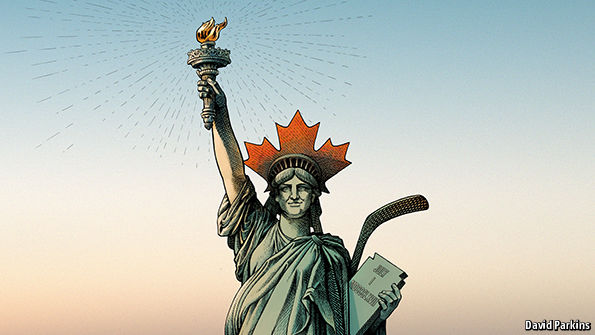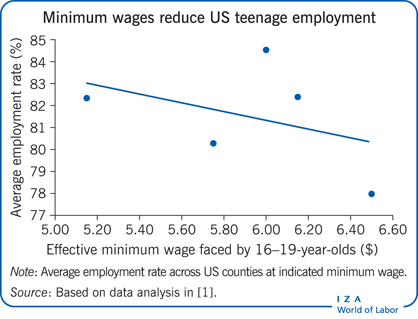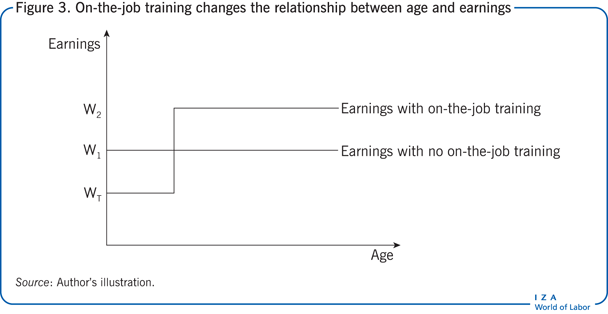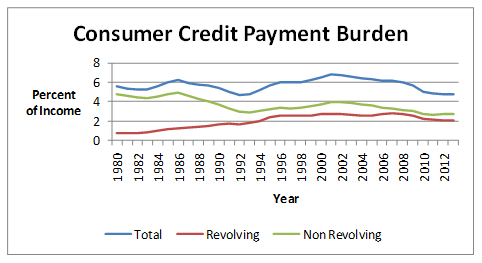Trump has been catching a lot of heat for his rather bungled remarks about abortion. Clinton in turn defended late-term abortions by claiming that these cases are often due to the mother’s health being jeopardized or complications with the pregnancy. There was even a heartbreaking story by a Mormon woman going viral that relayed the horrific experience of late-term abortion due to pregnancy complications. It turns out that the majority of Americans would likely approve of abortion in her situation. Gallup has found that 50% of Americans think abortion should be legal only under some circumstances, while 29% think it should be legal in all cases and a mere 19% think it should be illegal in all cases. When specifics are given, they found that 82% believe it should be legal when the mother’s physical health is endangered and 75% believe it should be in cases of rape or incest. Even the official stance of the LDS Church would fall under the “legal only under some circumstances” category (though members should realize just how seriously Church leadership takes this subject).
Nonetheless, the American population of women has basically been split in half on this matter for over a decade. The latest Gallup poll found the percentage of pro-choice women to be 54 percent, though it’s averaged at about 48.5% between 2001-2015. This squares with Pew’s finding that 50% of women view abortion as morally wrong. However, a 2016 Marist poll found that 82% of women would restrict abortion to the first three months of pregnancy (this is much closer to a large number of European countries).
Why would so many women object to late-term abortions if these are so often due to complications as Clinton said? There are probably many reasons, but one of them could have to do with the fact that Clinton’s reasoning is misleading. Granted, the majority of abortions take place early on in the pregnancy. As The Washington Post reported,
One-third take place at six weeks or pregnancy or earlier; 89 percent occur in the first 12 weeks, according to the Guttmacher Institute, which supports abortion rights. Only 1.2 percent of abortions—about 12,000 a year– take place after 21 weeks. (The Supreme Court has held that states may not prohibit abortions “necessary to preserve the life or health” of the mother.)
On top of that, Guttmacher says that 43 states already prohibit some abortions after a certain point in pregnancy, such as fetal viability, in the third trimester or after a certain number of weeks. So this is already a rare procedure that is prohibited in much of the country.
So are late-term abortions mainly due to later complications? A 2013 study by the Guttmacher Institute may suggest otherwise. Writing at the pro-life Charlotte Lozier Institute, Elizabeth Johnson expounds on Guttmacher’s data:
For many years, abortion-rights advocates have asserted that abortions after 20 weeks are performed because of maternal health complications or lethal fetal anomalies discovered late in pregnancy. However, wider data from both the medical literature and late-term abortion providers indicates that most late-term procedures are not performed for these reasons. Previous survey studies of late-term abortion patients have confirmed that most late-term abortions are performed because of a delay in pregnancy diagnosis and for reasons similar to those given by first-trimester abortion patients: financial stressors, relationship problems, education concerns or parenting challenges.
A recent paper entitled, “Who seeks abortion at or after 20 weeks?” supports these conclusions. The study, published in Perspectives on Sexual and Reproductive Health, a journal of the Guttmacher Institute, marks a notable departure from previous statements by abortion rights advocates that late-term abortions were rarely elective. Authors Foster and Kimport highlight the characteristics of women seeking abortion at or after 20 weeks gestation. The authors acknowledge that, in fact, wider “data suggests that most women seeking later terminations are not doing so for reasons of fetal anomaly or life endangerment.” The study explores reasons for delay in seeking abortion services, comparing first-trimester and late-term abortion groups. While there are numerous limitations to the study, the authors suggest that the characteristics of women who seek both first-trimester and late-term abortions are substantially similar.
She concludes,
The characteristic similarities and delay commonalities observed across first trimester and late-term abortion groups suggest that women who seek abortion share similar characteristics across gestational ages. The stressful circumstances of unprepared pregnancy, single-motherhood, financial pressure and relationship discord are primary concerns that must be addressed for these women. However, these circumstances are not fundamentally alleviated or ameliorated by late-term abortion. Indeed, late-term abortion places these women at greater risk of surgical complications, subsequent preterm birth, and mental health problems, while simultaneously ending the life of an unborn child. As a medical profession and society, we rightly seek alternative, compassionate responses for the women seeking late-term abortion procedures for such challenging yet elective reasons.
It is reasons like this that some fact checkers have called Clinton out on her previous late-term abortion comments. It is interesting that in Reason‘s useful rundown of late-term abortions in America there are no figures provided to support the claim that these abortions “are generally a last resort” and “involve situations where the mother’s life or health is in jeopardy.” The blog Secular Pro-Life Perspectives drew on a couple studies to further demonstrate the rarity of health problems as a reason for abortion:
This 1988 study surveyed 399 women seeking abortion at 16+ weeks. The study found women were obtaining late-term abortions instead of earlier-term abortions (i.e. reasons for delaying) because:
- 71% Woman didn’t recognize she was pregnant or misjudged gestatio
- 48% Woman found it hard to make arrangements for abortion
- 33% Woman was afraid to tell her partner or parents
- 24% Woman took time to decide to have an abortion
- 8% Woman waited for her relationship to change
- 8% Someone pressured woman not to have abortion
- 6% Something changed after woman became pregnant
- 6% Woman didn’t know timing is important
- 5% Woman didn’t know she could get an abortion
- 2% A fetal problem was diagnosed late in pregnancy
- 11% Other
It continues:
According a 2004 study by Guttmacher, 1,160 women seeking abortion (not just late-term) gave overall reasons for obtaining an abortion at all stages (may list more than one):
- 74% Having a baby would dramatically change my life
- 73% Can’t afford a baby now
- 48% Don’t want to be a single mother or having relationship problems
- 38% Have completed my childbearing
- 32% Not ready for a(nother) child
- 25% Don’t want people to know I had sex or got pregnant
- 22% Don’t feel mature enough to raise a(nother) child
- 14% Husband or partner wants woman to have abortion
- 13% Possible problems affecting the health of the fetus
- 12% Physical problem with my health
- 6% Parents want me to have an abortion
- 1% Woman was victim of rape
- <0.5% Became pregnant as a result of incest
The same Guttmacher study has statistics for later term abortion (13+ weeks gestation). According to Guttmacher, 21% of women who had abortion at or past 13 weeks were doing so for fetal health concerns, and 10% for personal health concerns.
Abortion is a complex issue, especially when it comes to the legal aspects.[ref]This is why I’m currently reading through philosopher Christopher Kaczor’s The Ethics of Abortion.[/ref] But accuracy is important. While better data may indeed show that health complications are the culprits behind late-term abortions, the current evidence suggests that they are not.

UPDATE: Thanks to Margot in the comments for pointing out this 2014 study. She summarizes: “A more recent study (published in 2014) on all women referred to the Yale hospital for late-term abortions from 2002 to 2011 found that 69% were for a poor prenatal diagnosis–fetal anomaly (41.6%), aneuploidy (15.7%) or multiple anomalies (12.7%)–and another 9.6% were for pregnancy complications or maternal disease. Just over 20% were for unwanted pregnancies, perhaps where the mother either didn’t know she was pregnant earlier or had problems accessing abortion.” This is the kind of evidence mentioned above that could help identify health complications as the main culprit. Good data are hard to come by, so this was an excellent find. For the pro-life crowd, the near 21% of late-term abortions performed because the pregnancy was “unwanted” will still be alarming. But if this study is generalized, it could provide more weight for Clinton’s remarks. However, it is worth pointing out that these numbers are taken from Yale New Haven Hospital between 2002 and 2011. Multiple demographic factors (income, education, marital status, etc.) are at play when it comes to the numbers of a single hospital, which should make us cautious about drawing broad conclusions from them. Other numbers tell a different story. For example, since 2012, 91% of 14-20 week and 80% of 21+ week abortions in Arizona have been elective (i.e., not due to maternal or fetal medical conditions). In Florida, 87% of 13-24 week abortions have been elective since 2013 (it’s even higher when you consider the fact that things like “emotional/psychological health of the mother” and “social or economic reasons” are filed under “non-elective”).[ref]Secular Pro-Life has made it easier on us by crunching the numbers from Arizona and Florida.[/ref] Diana Greene Foster–one of the authors of the 2013 Guttmacher study above–told FactCheck.org “that “[t]here aren’t good data on how often later abortions are for medical reasons.” She said based on limited research and discussions with researchers in the field that abortions for fetal anomaly “make up a small minority of later abortions,” and that those for life endangerment are even harder to characterize. This is because many of the women who fall into that category would be treated under emergent circumstances at hospitals rather than at a dedicated abortion clinic, making numbers harder to obtain, Foster said.” In other words, better data and research are needed.

 they also grow domestically, as demonstrated by
they also grow domestically, as demonstrated by 







 In the nearly half-century history of
In the nearly half-century history of